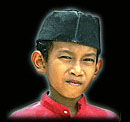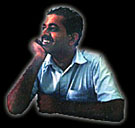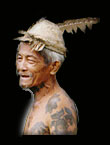This page features articles related to web hosting, search engine marketing and other important aspects for webmasters.
Sunday, April 29, 2007
Saturday, April 28, 2007
Text Translation
LinguaWeb™ is the first release of an online beta system providing services which allow users to search and surf English-based content on the Internet in Bahasa Melayu in real-time. LinguaWeb™ has received tremendous support from users worldwide. New languages planned for development include Mandarin, Arabic, Spanish and others.
Posted by jerteh at 2:22 PM 0 comments
Labels: info
Online Tools and Services
This new online tool makes it possible to create quick
- FavIcon from Pics
- Favicon Validator
- CSS Poster
- Buddy Icon from Pics
- Image Embellisher
- Online Image Splitter
- Cookie Tester
Posted by jerteh at 12:11 PM 0 comments
Labels: info
Thursday, April 12, 2007
Stem cells may end diabetes jabs
Stem cells may end diabetes jabs
WASHINGTON: Diabetes using stem-cells therapy have been able to stop taking insulin injections for the first time, after their bodies started to produced the hormone naturally again.
In a breakthrough trial, 15 young patients with newly diagnosed Type 1 diabetes were given drugs to suppress their immune systems, followed by transfusions of stem cells drawn from their own blood.
The results show that insulin dependent diabetics can be freed from reliance on needles by an injection of their own stem cells. The therapy could signal a revolution in the treatment of common condition, which affects millions.
People with Type 1 diabetes have to give themselves regular injections to control blood sugar levels, as their ability to create the hormone naturally is destroyed by immune disorder.
All but two of the volunteers in the trials, details of which were published yesterday in the Journal of the American Medical Association, did not need daily insulin injections up to three years after stopping their treatment regimes.
The findings were released yesterday as the future of US stem-cell research was being debated in Washington.
Stem cells are immature, unprogrammed cells that have the ability to grow into different kind of tissue and can be sourced from people of all ages.
Previous study has suggested that stem-cells therapies offer huge potential to treat a variety of diseases, such as Alzheimer’s, Parkinson’s and motor neuron disease.
A study by British scientists in November also reported that stem-cell injections could repair organ damage in heart attack victims.
But research using the most versatile kind of stem cells – those acquired from human embryos – is currently opposed by powerful critics, including US President George W. Bush.
The journal’s study provides the first clinical evidence for the efficacy of stem cells in Type 1 diabetes. Sufferers of the chronic condition, which normally emerged in childhood or early adulthood, have to inject themselves at least four times a day.
Type 2 diabetes, which usually affects people later in life, is linked to a lifestyle factors. There are almost 2 million Type 2 diabetics in Britain, most of whom control their blood-sugar levels with pills or through diet.
The new study, by a joint team of Brazilian and American scientists, fount that one of the patients to undergo the procedure had not used any supplemental synthetic insulin for three years.
“Very encouraging results were obtained in a small number of patients with early-on-set disease,” wrote the authors, led by Julio Voltarelli, from the University of Sao Paulo in Ribeirao Preto, Brazil. “Ninety-three per cent of patients achieved different periods of insulin independences and treatment-related toxicity was low, with no mortality.”
“It will probably be five to eight years before we see a treatment being available,” said Richard Burt, a co-author of the study from Northwestern University’s Feinberg School of Medicine in Chicago.
Reference from : New Straits Times
Posted by smkbukitpayong at 11:51 PM 0 comments
Labels: info
Nutrient Intake
Recommended Nutrient Intake (RNI)
The recommended nutrient intake (RNI) is the daily intake corresponding to RDA which meets the nutrient requirements of almost all (97.5%) apparently healthy individuals.
The range of intakes encompassed by the RNI and upper tolerable nutrient intake should be considered sufficient to prevent deficiency while avoiding toxicity.
Please download the documents below for complete informations on RNI.
Posted by smkbukitpayong at 11:43 PM 0 comments
Labels: info
Living with Parkinson’s Disease
WHEEL POWER
By ANTHONY THANASAYAN
It is possible to live life to the fullest, despite having Parkinson’s Disease. All it takes is a positive outlook, a strong will and some support.
YESTERDAY was World Parkinson’s Disease Day. The event is commemorated annually on the birthday of Dr James Parkinson who, in 1817, certified it as a medical condition.
To mark the occasion, support groups around the globe took the opportunity to highlight the effects of this insidious disease which generally affects men and women over 40 years old.
Parkinson’s Disease (PD) is a progressively degenerative neurological condition. Although there is currently no cure for the condition, it is treatable.
Ir Sivaraman Kannan, 69, wrote in to share what it feels like to have lived with PD for over a decade.
“Everything about me in the past is no more,” began Sivaraman’s letter.
“I used to be involved in strenuous activities as an engineer project manager,” he added.
“I used to be a keen photographer, and loved aero-modelling and travelling. In fact, it wouldn’t take long for anyone meeting me for the first time to realise that I was someone who was practically born for the great outdoors.
“But PD drastically changed all that for me.
“Today, just trying to coordinate my body movements is like climbing up a mountain.”
The transition (and the beginning of the nightmare) in Sivaraman’s life started 10 years ago after a visit to an ophthalmologist.
“Instead of being concerned about my eyes, the doctor couldn’t help noticing the slight tremor in my left hand,” he recalled. The ophthalmologist then urged him to have the condition checked immediately.
Thus, began the series of confusing of “check-ups” that lasted over four years. And even after that, he wasn't properly diagnosed with PD!
It wasn’t until Sivaraman’s tremors had become more pronounced and started to affect his writing and his work that he was finally referred to the neurology department where his suspicions were confirmed.
“Although it was terribly distressing to hear the doctors say that PD was not curable, it was a relief to note that medication was available to enable me to cope with the symptoms,” recalled Sivaraman.
(Symptoms may include difficulty in moving one’s limbs, facial tics, and even senile dementia.)
However, some of the medication made him hallucinate. No doctors had warned him about this, so he was thrown into total confusion.
“I thought I was going mad,” he explained.
“After about a week, I became extremely lethargic and could not walk without assistance.
“What was worse, when I tried to discuss the problem with my doctor, he responded with a shrug, saying, ‘You are already 63; what else do you want to do (in life?). Just take the medication and rest at home.’”
So Sivaraman turned to the Internet for information and support from PD support groups abroad.
“I also benefited a lot from Ayurvedic treatment. I spent five weeks in India, after which I returned home, feeling much better,” he said.
“Today, I try to do everything that I wasn’t able to in the past – or mistakenly thought that I had to somehow give up.
“This includes controlling the remote control switches for my model helicopter, despite my tremors.
“I am also the photographer at functions organised by my family and friends. And I dare say that I think I do a darn good job of it despite my trembling hands. The trick is to remove my affected hand from the camera just before I snap a shot.”
Sivaraman says his goal now is to keep himself as fit as possible and live life to the maximum.
“As vice-president of the Malaysian Parkinson Disease Association (MPDA) in Kuala Lumpur, I also want to try my best to help others facing the same situation.
“It’s important that every PD patient live as normal a life as possible.
“Though PD is progressively degenerative, I intend to keep on moving ahead and not think about waiting for a cure or for the disease to catch up with me.
“The MPDA has a social club which offers PD persons an ideal opportunity to meet fellow patients and help each other in whatever way they can.
“I would like to extend an open invitation to everyone with PD or, for that matter, anyone out there who is looking for information on the disease.
“Please pay us a visit at the Parkinson Club in Old Klang Road, KL.”
Posted by jerteh at 11:28 PM 0 comments
Labels: info
Saturday, April 7, 2007
Who are Malaysians?

The Malay are Malaysia's largest ethnic group, accounting for over half the population and the national language. With the oldest indigenous peoples they form a group called bumiputera, which translates as "sons" or "princes of the soil." Almost all Malays are Muslims, though Islam here is less extreme than in the Middle East. Traditional Malay culture centers around the kampung, or village, though today one is just as likely to find Malays in the cities.

The Chinese traded with Malaysia for centuries, then settled in number during the 19th century when word of riches in the Nanyang, or "South Seas," spread across China. Though perhaps a stereotype, the Chinese are regarded as Malaysia's businessmen, having succeeded in many industries. When they first arrived, however, Chinese often worked the most grueling jobs like tin mining and railway construction. Most Chinese are Tao Buddhist and retain strong ties to their ancestral homeland. They form about 35 percent of the population.

Indians had been visiting Malaysia for over 2,000 years, but did not settle en masse until the 19th century. Most came from South India, fleeing a poor economy. Arriving in Malaysia, many worked as rubber tappers, while others built the infrastructure or worked as administrators and small businessmen. Today ten percent of Malaysia is Indian. Their culture -- with it's exquisite Hindu temples, cuisine, and colorful garments -- is visible throughout the land.

The oldest inhabitants of Malaysia are its tribal peoples. They account for about 5 percent of the total population, and represent a majority in Sarawak and Sabah. Though Malaysia's tribal people prefer to be categorized by their individual tribes, peninsular Malaysia blankets them under the term Orang Asli, or "Original People." In Sarawak, the dominant tribal groups are the Dayak, who typically live in longhouses and are either Iban (Sea Dayak) or Bidayuh (land Dayak). In Sabah, most tribes fall under the term Kadazan. All of Malaysia's tribal people generally share a strong spiritual tie to the rain forest.
Posted by jerteh at 9:54 PM 1 comments
Labels: info
Info Terengganu
About Terengganu
Terengganu is located at the east coast of Peninsular Malaysia. To the north there lies the Kelantan state, then neigbouring with Pahang at the south.
History
History of Terengganu began long before the establishment of Melaka sultanate. The archaeological evidences found in Bewah Cave in Kenyir Lake proven that this state has already been resided since 4,000 B.C. However, the Sultanate of Terengganu began only in 1724 with Sultan Zainal Abidin as the first sultan for this state.
During the early sultanate period, although Siam claimed that Terengganu was part of its dominion resulted from the Bunga Emas and Bunga Perak sent by the latter in every 3 years, it was said that the gift was actually a present of courtesy and token of friendship but not tributes as to prevent the interference of British in the state’s administration. Siam handed over Terengganu to British in 1909 after signing the Bangkok Agreement but this was rejected by Terengganu. Another agreement was then signed between Terengganu and British in 1910 and thereafter Terengganu officially recognized the appointment of a British Representative with the condition the British agent was not empowered to interfere in the administration of the state. The British who was not satisfy with their status continued to look for ways to get involve in the internal affairs of the state. In 1919, their attempt finally succeeded. Another agreement was signed between British and Sultan Muhammad. Terengganu officially accepted a British advisor, seek and follow his counsels in all administrative matters except religion issues.
Nevertheless, the involvement of British had brought to resistance from the people. The patriotic awareness had spread among the state and led to the establishment of Association of Young Malays (Kesatuan Melayu Muda, KMM) in 1937. A series of campaigns was held by KMM during 1940-1941. In 1942 when the Japanese took the control of Peninsular Malaysia, KMM was dissolved and Terengganu was under the administration of Japanese Army until 1943 when the governance authority was transferred to the Thai Army. Thai administration remained in Terengganu until Japan conceded defeat to the alliance in August 1945, then it was again back to the hand of British until the Federation of Malaya achieved her independence on 31 August 1957.
Today
Terengganu today covers 12,995 square kilometers and comprises of seven districts: Setiu, Kemaman, Dungun, Marang, Hulu Terengganu and Kuala Terengganu. There is approximately 1 million of population in this state which 90% are Malays and the reminder share among the Chinese and Indians and a very small percentage goes to aborigines.
Economy
The discovery of offshore oil in gas in 1974 has granted Terengganu a significant change to its economic, technology and social structure. At current production, the oil and gas reserves are estimated to last for another 13 years and 41 years respectively.
Terengganu has enjoyed considerable development over the past 30 years with its rapid industrialization and growing economic activity after the discovery of these reserves. Before this, farming and fishing were the main economic activities for the state.
Even so, 45% of its land is still covered by lush pristine forests and rivers also home for some very old Malaysia traditional culture whose practices and customs have been handed down the generations. The 225 km of coastline is not only making Terengganu the state with the longest coastline in Peninsular Malaysia but also contributing to the state GNP. As a holiday destination, Terengganu is a neverending journey of discovery with its rich and exotic culture, breathtaking wonders of nature and endless potential for adventure.
Culture and Religion
Due to its history background and geographical location, Terengganu receives cultural influences from the neighbour in the north: Kelantan and Thailand. Though it is conservative Muslim state, the general public is still enjoying the freedom of worship. However, beer or alcohol is not widely available in certain places especially Malay own shops. Always remember that while n Rome, do as the Romans do.
Working week
Most of the offices start the week on Sunday and the weekend falls on Friday and SaturdayPosted by jerteh at 11:42 AM 0 comments
Labels: info



